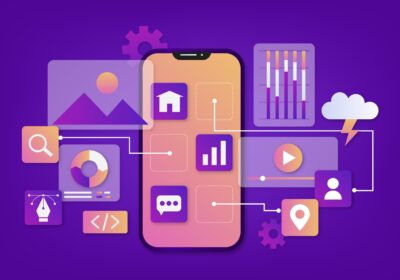There has never been a clear winner when it comes to mobile platforms. Both iOS & Android app development have been going to toe-to-toe for years. Mobile app developers are not willing to stick to just one of the two either. Mobile technologies today can, rather easily, realize the idea of targeting a wider audience for businesses provided there is enough expertise to leverage them properly.
When it comes to that expertise, there was always one faction among developers for a long time – native app developers. Native app developers have the expertise and knowledge to build apps in a target platform. They know the specifics, and they know what their app can become in the platform they have expertise in. But, not too while ago, cross-platform app development came into the picture. And native app developers raised questions.
Let’s see what the situation is all about, and explore the merits and demerits of cross-platform mobile app development.
Cross-platform app development
It’s not to be confused with hybrid app development, as both are fundamentally different. Cross-platform development is an umbrella term for application development that targets multiple platforms. Hybrid falls into that category but only as a subtype. Hybrid app development generally uses a specific development model to create apps that are a hybrid variant of web and native apps.
Hybrid apps are coded in HTML, CSS or JavaScript and then encased with a native WebView browser giving it the feel of an app. Cross-platform development is what a business needs if its target audience is split between Android, iOS, and Windows platforms.
Pros
Hybrid app development is known for its speed. Even inexperienced developers would be able to develop a hybrid app rather quickly, reducing costs for businesses while allowing them to enter the market early. Generally, in most cases, developers would only need their front-end development knowledge for developing hybrid apps, and don’t need to go out of line to build the app from scratch.
For cross-platform development, it’s a different case. They are akin to native apps, and are often referred to as near-native due to this. Mobile apps developed using tools like Xamarin or React Native are considered as native apps. However, unlike hybrid apps wrapped in WebView, these native apps can access mobile hardware directly. This means their performance isn’t limited. They are fast in both audio and video processing.
It still takes good app logic and a well-devised development strategy to save time and costs with cross-platform development. Regardless of the targeted platform, the developers would have to build the app’s core first, and then separately tune it to be functional and visually appropriate.
The development process is comparatively faster, and debugging and maintenance are much easier. Another one of its merits is flexibility, particularly when it comes to UI/UX development. Using the Xamarin tool gives developers two options for UI – a basic Xamarin.Forms interface, and a more flexible interface that can be tailored for the targeted platforms. The latter looks and feels very much like a native interface.
Cons
Because WebView is still technically a browser and is separate from the mobile device’s hardware, hybrid apps won’t always be able to guarantee great performance. However, cross-platform apps can. But it still comes with a fair share of cons.
Cross-platform apps are near-native apps, but they are still not native apps. It still has functional limitations unlike native apps, and limitations respective to the platform. Each platform comes with its own unique functionalities and flexibilities. Cross-platform apps won’t be able to leverage the unique tools and functionalities of one particular platform, as they run on all platforms.
In addition, it’s very challenging to offer a good user experience on cross-platform apps as UX varies between platforms. Facebook first started with a cross-platform but soon realized their user experience limitations, and decided to go for native apps on iOS and Android.
Conclusion
Cross-platform app development is still in demand, and contributes mainly to enterprise application services. Because technology is advancing rapidly today, clinging to native app development alone is not a wise approach. There are possibilities to explore, and the future of mobile app development will present more opportunities for businesses. And cross-platform development would more likely have a bigger role soon.





